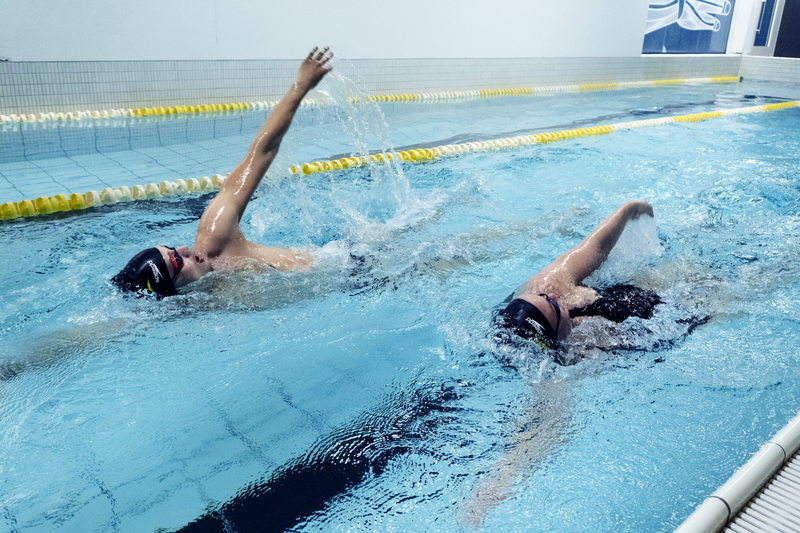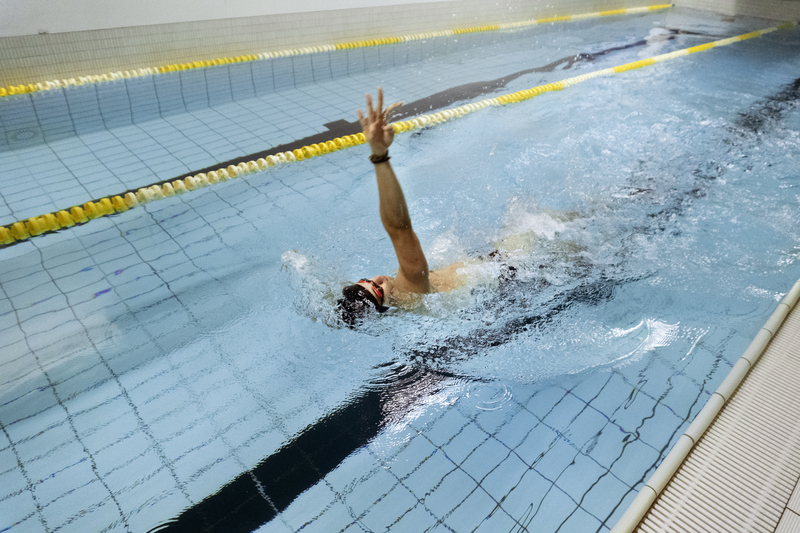Swimming blog - BACKSTROKE Our best tips on mastering the backstroke
Do you break out in a cold sweat when you see the word backstroke come up in your training? Are refusing to swim backstroke even if it’s beneficial for freestyle swimming? Here are our best tips to thrive while swimming backstroke.
On your back you have to swim straight. You can’t see where you’re going or how your arms enter the water. You are effectively swimming blind. Swimming straight is first priority. Our tip is to pick a line or feature on the roof and follow that for 25 meter. Make sure to look out for the 5 meter markings on the roof that indicate you are almost at the wall to prevent hitting your head against it.
Body position is just as important in backstroke as it is in freestyle. We don’t want the legs to sink. To help achieve this outcome, the head must be in a neutral position, lying flat on the surface and looking up at the roof. Do not lift the head up out of the water as this will only drop the hips, which has the same effect as hitting the brakes and will slow you down.

Besides the neutral head position just mentioned above, backstroke is a leg driven stroke. This means we kick more to maintain a good body position. The reason for this, is that the pull-through of the arms is less effective than in freestyle. Even though our faces are out of the water we will feel the effects of kicking more with heavy breathing. Talking about breathing, don’t forget to breathe out. Our tip is to breathe out every other stroke.
Stay balanced, rotating left and right throughout the entire time. Good body rotation creates space under the water to catch and push the water backwards. The elbow is bent from the moment the water is caught underwater. A straight arm underwater is not recommended. It may cause shoulder injuries.
The arms are swung over the water as quickly and as straight as possible. Unlike in freestyle, we do not bend the arms on the recovery, but try and move them as quickly as possible over the water. Your shoulder is free of the water while swinging the arm over the water. This provides backwards momentum and timing.

Exit the water with your thumb and enter with your pinky. Both things result in a smooth stroke. Our tip for hand entry is to pretend that you are breaking through thin ice on the surface of the water with your pinky.
The arms should be moving all the time, like a windmill. There should be no stop in the stroke. Our tip is a simple mantra: Catch and lift. As you start the underwater catch, lift the opposing hand out of the water, this is great technique.
So, to re-cap our tips: swim straight by following a marking on the ceiling, keep your head flat on the surface and look up, kick your legs, rotate, swing your arms and break the ice while singing catch and lift. You can always go through these tips step by step with our backstroke course.
That’s how to do it folks. Go out there and make us proud.
